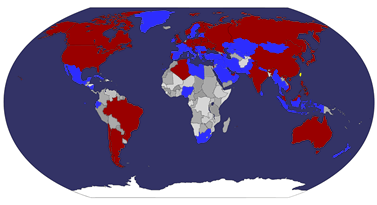L'écologie - Balkans, l'Articulation publie la Bulgarie - la Serbie


0.60 Leva - Eurasian Woodcock (Scolopax rusticola)
"The Eurasian Woodcock, Scolopax rusticola, is a medium-small wading bird found in temperate and subarctic Eurasia. It has cryptic camouflage to suit its woodland habitat, with reddish-brown upperparts and buff-coloured underparts. Its eyes are set far back on its head to give it 360-degree vision and it probes in the ground for food with its long, sensitive bill, making it vulnerable to cold weather when the ground remains frozen.
The male performs a courtship flight known as 'roding' at dusk in spring. When threatened, the female can carry chicks between her legs, in her claws or on her back while flying, though this is rarely witnessed. The world population is estimated to be 15 million to 16 million birds.
The Rufous-tailed Rock Thrush or just Rock Thrush (Monticola saxatilis) is a member of the thrush family Turdidae."-wiki
1.00 Leva - Rufous-tailed Rock Thrush (Monticola saxatilis)
"It breeds in southern Europe across central Asia to northern China. This species is strongly migratory, all populations wintering in Africa south of the Sahara. It is an uncommon visitor to northern Europe. Its range has contracted somewhat at the periphery in recent decades due to habitat destruction. For example, in the early 20th century it bred in the Jura Krakowsko-Częstochowska (Poland) where none occur today, but it is not considered globally endangered.
This is a medium-sized but stocky thrush 17-20 cm in length. The summer male is unmistakable, with a blue-grey head, orange underparts and outer tail feathers, dark brown wings and white back. Females and immatures are much less striking, with dark brown scaly upperparts, and paler brown scaly underparts. The outer tail feathers are reddish, like the male.
This species breeds in open dry hilly areas, usually above 1500 m. It nests in rock cavities, laying 4-5 eggs. It is omnivorous, eating a wide range of insects and berries. The male Rock Thrush has a clear and tuneful song."-wiki











.png)




















 taiwan
taiwan  cover or postcard
cover or postcard  FDC
FDC 






























































































No comments:
Post a Comment